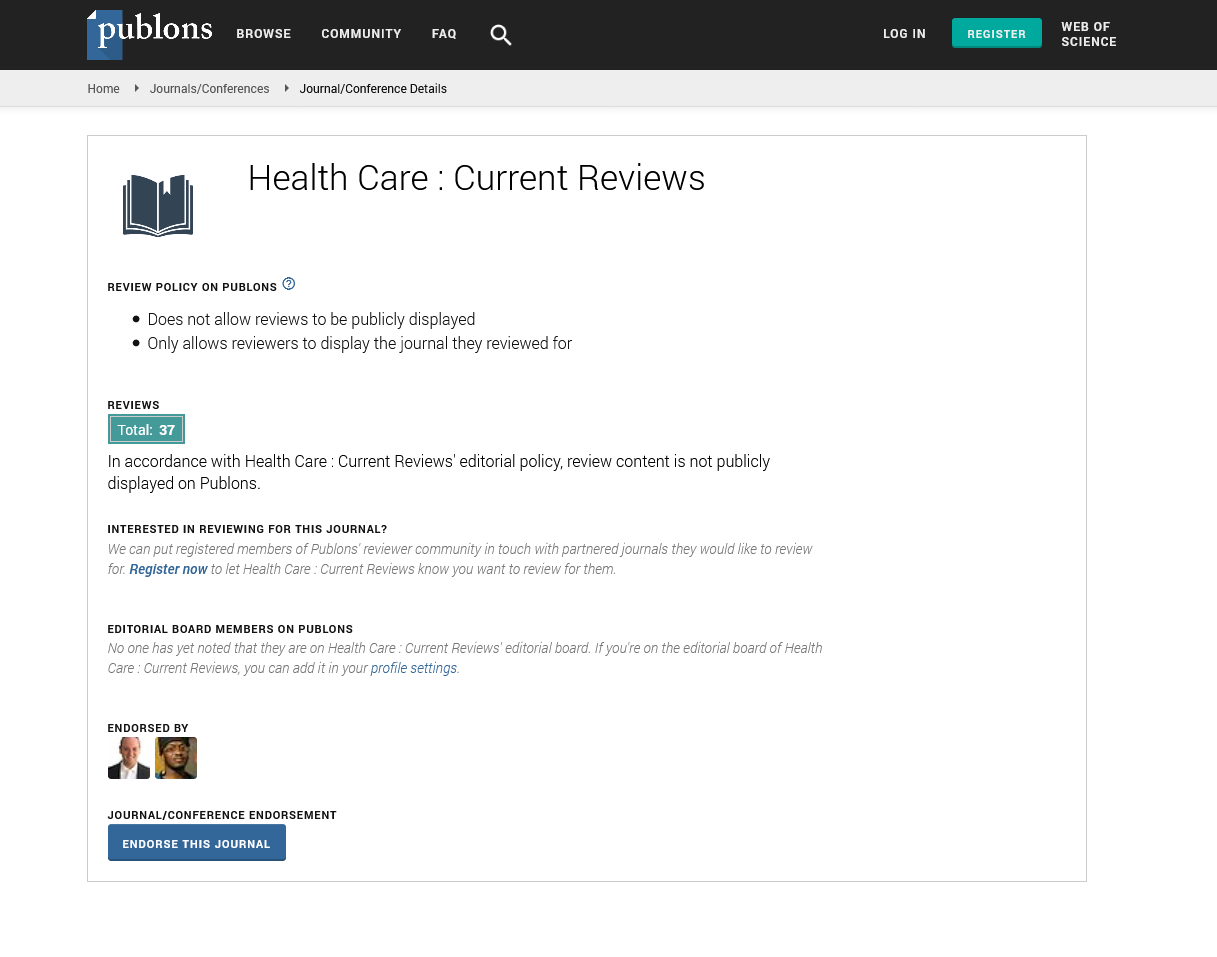Indexed In
- Open J Gate
- Academic Keys
- RefSeek
- Hamdard University
- EBSCO A-Z
- Publons
- Geneva Foundation for Medical Education and Research
- Google Scholar
Useful Links
Share This Page
Journal Flyer

Open Access Journals
- Agri and Aquaculture
- Biochemistry
- Bioinformatics & Systems Biology
- Business & Management
- Chemistry
- Clinical Sciences
- Engineering
- Food & Nutrition
- General Science
- Genetics & Molecular Biology
- Immunology & Microbiology
- Medical Sciences
- Neuroscience & Psychology
- Nursing & Health Care
- Pharmaceutical Sciences
Explore the issues to achieve value-based healthcare services: A method of way out
9th World Congress on Health Economics, Health Policy and Healthcare Management
April 17-18, 2023 | Paris, France
Rafia Rahman
University of Dhaka, Bangladesh
Scientific Tracks Abstracts: Health Care Curr Re
Abstract:
Considering health as a regular consumer product, people are careless regarding health. The pandemic era discovers, to cure disease we need value-based healthcare service instead of value-money for health. In the pandemic era 2020 breaks healthcare service delivery systems across the world. Aim of the study was to explore a method of way-out to achieve value-based healthcare services. Here, the term “value” is defined as either cure from diseases or reduced suffering from diseases. Likewise, “value-based healthcare services” is defined as providing appropriate services to either cure diseases or reduce the suffering of diseases. It was a piloting, cross sectional and mix method type of study. It was conducted to see the feasibility. Objectives of the study were; i. To explore the current status of value-based health service. ii. To discover the factors influencing value-based health services. iii. To determine client perception and suggestions for improvement of value-based services. iv. To determine management perception and suggestions for improvement of value-based services. A conceptual framework is prepared and followed during research [Figure 1]. One hundred and five (105) outdoor patients of a district hospital (Madaripur) at Dhaka division in Bangladesh was the study place, sample size and respondent. Regarding supply-side, four managers of four district hospitals (designated as civil surgeons) in Bangladesh were interviewed. The convenience sampling technique was used here. A total of sixtysix (66) dependable variables were addressed twenty-three (23) independent variables. To fulfill the objectives and aim of the study a total of forty-six (46) questions for demand-side (patient) and sixty-seven (67) questions for supply-side (healthcare manager) was asked. Primary data was collected from the survey. To collect data a face-to-face interview from respondents was conducted asking both open and closed ended structured questionnaires. For water, sanitary, hand wash hygiene (WASH) at facility observation techniques was used. Participants were informed regarding confidentiality as well as the option of withdrawing from participation if they felt uncomfortable and those data were used in this research. 73.3% male and 26.7% female with age limit from 18 to 100 completing primary (47%) and secondary (45%) level of education engage with business (52%) and housekeeping (21%) earn thirty-five to one lac per month living mostly brick made house (97%) with facility of sanitation (100%) and water (97%) supply at home is the socio-demographic status of respondents. Regarding perception of disease development, they know disease does not develop naturally (92%), they believe (97%) food habit, no exercise and tobacco consumption is responsible for developing disease. About 97% of respondents were sick for less than seven days and were not under treatment (93%) and came for consultation by their own choice (67%) and near to home (17%). About 95% of respondents visited this HCF before and 99% came to receive HC services whenever required. According to their (95%) statement HC providers inform them about the outcome of disease and they (97%) are happy with the services. Health was valued by QALY (EQ5D) and visual analogue scale. Sample populations gave values ranging from 50 to 100 and the median is 90 in visual analogue scale. EQ5D found some problem; in mobility (11.4%), taking self-care (7%), doing usual activity (10%), moderate pain (26.7%) and anxiety (11.5%). Therefore, health is valued in this HCF. According to respondents, the friendly behaviour (64%) of HC providers assists to improve their health state, for further improvement to value health they (52%) suggest improving privacy. About 92% of respondents feel the presence of a third party locally called DALAL is good to get healthcare services. Through them they (79%) receive healthcare from a private chamber of HC provider and this third party did not take any money from them. About 92% of respondents understood value-based healthcare services and according to them (95%) HC providers provide them adequate service (in terms of cure from disease). Study population (97%) agreed that they got adequate services against money they spent on HC services. The study concludes with the recommendations that the result of pilot study is feasible but cannot be generalised. To give a recommendation at policy level further study with a good number of facilities and sample size will be required. To serve this a further research in eight district hospitals on thirty-two hundred sample sizes (following 95% Confidence level sample size [385] and Taro Yamane’s formula [397] sample size) is in planning.
Biography :
Rafia Rahma works as an assistant professor at the Institute of Health Economics, University of Dhaka. She has published several articles and attended various conferences centered on Health Economics.

